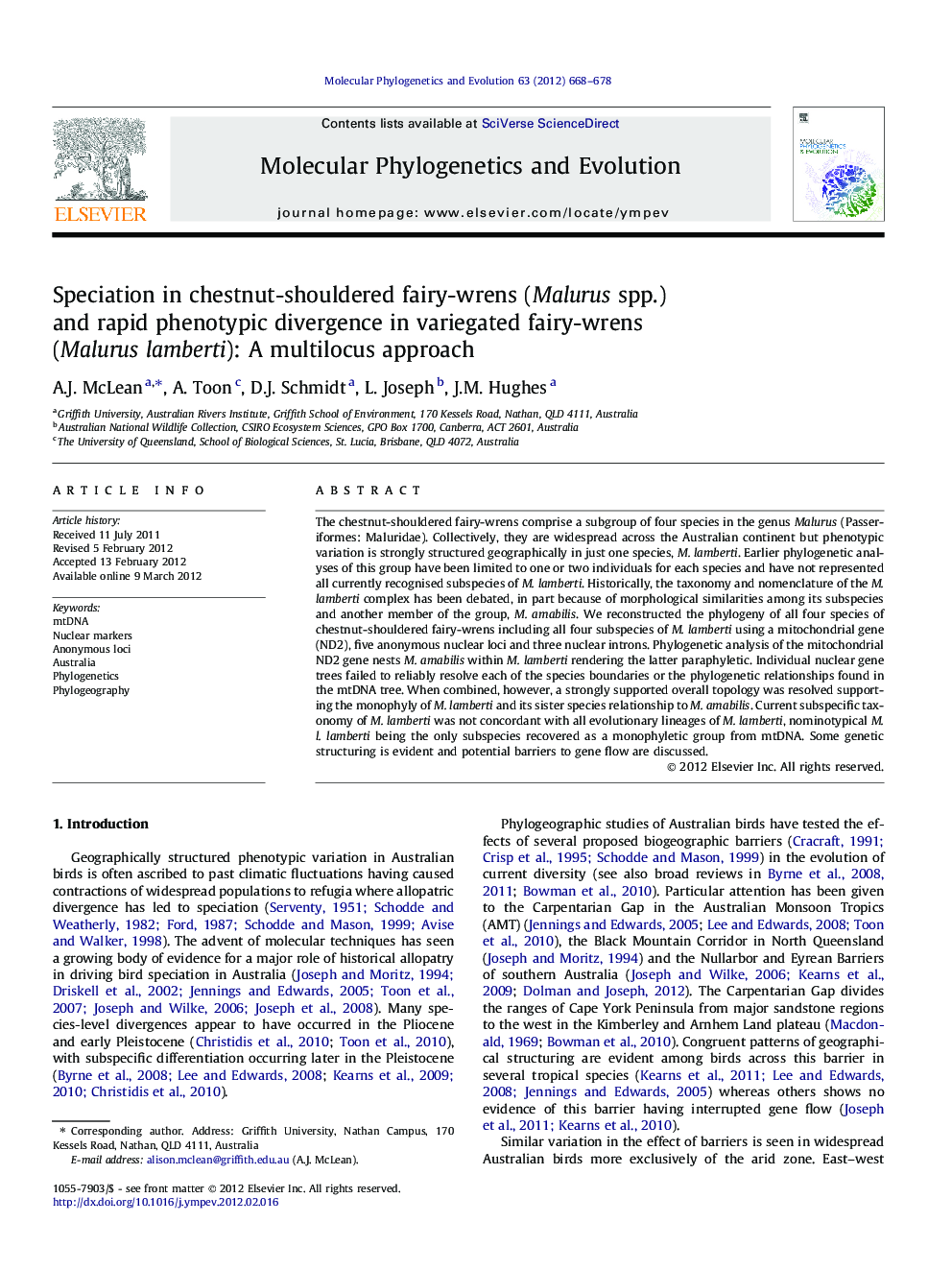| Article ID | Journal | Published Year | Pages | File Type |
|---|---|---|---|---|
| 2834132 | Molecular Phylogenetics and Evolution | 2012 | 11 Pages |
The chestnut-shouldered fairy-wrens comprise a subgroup of four species in the genus Malurus (Passeriformes: Maluridae). Collectively, they are widespread across the Australian continent but phenotypic variation is strongly structured geographically in just one species, M. lamberti. Earlier phylogenetic analyses of this group have been limited to one or two individuals for each species and have not represented all currently recognised subspecies of M. lamberti. Historically, the taxonomy and nomenclature of the M. lamberti complex has been debated, in part because of morphological similarities among its subspecies and another member of the group, M. amabilis. We reconstructed the phylogeny of all four species of chestnut-shouldered fairy-wrens including all four subspecies of M. lamberti using a mitochondrial gene (ND2), five anonymous nuclear loci and three nuclear introns. Phylogenetic analysis of the mitochondrial ND2 gene nests M. amabilis within M. lamberti rendering the latter paraphyletic. Individual nuclear gene trees failed to reliably resolve each of the species boundaries or the phylogenetic relationships found in the mtDNA tree. When combined, however, a strongly supported overall topology was resolved supporting the monophyly of M. lamberti and its sister species relationship to M. amabilis. Current subspecific taxonomy of M. lamberti was not concordant with all evolutionary lineages of M. lamberti, nominotypical M. l. lamberti being the only subspecies recovered as a monophyletic group from mtDNA. Some genetic structuring is evident and potential barriers to gene flow are discussed.
Graphical abstractFigure optionsDownload full-size imageDownload as PowerPoint slideHighlights► mtDNA phylogeny of chestnut-shouldered fairy-wrens (Malurus) reveal five main clades. ► mtDNA tree topology suggests Malurus lamberti is not monophyletic. ► Widespread discordance among mtDNA and nuDNA gene trees. ► Combined dataset recovers monophyly of M. lamberti and its sister relationship to M. amabilis. ► This research highlights the importance of using multiple molecular markers and analysing multiple individuals per taxon.
